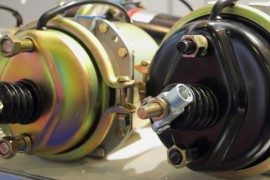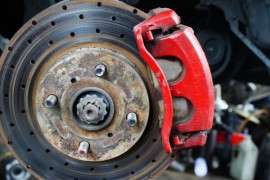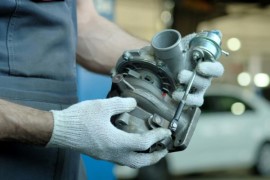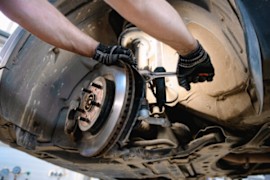{
"lazyNodes": false,
"abFitnotesFlag": false,
"abCrawlReviews": false,
"productOptionsCookie": false,
"orderDelayFlag": false,
"skipSessionCookie": false,
"covidMessage": false,
"fullTitleCookie": false,
"nrLoggerCookie": false,
"checkoutReviewCookie": false,
"productOptionSeqCookie": false,
"maintenanceFlag": false,
"bufferETACookie": false,
"multiShippingDiscountFlag": false,
"newFitmentFlag": false,
"surveyOptInFlag": false,
"crossSellFlag": false,
"skuMappingFlag": false,
"paySplitCookie": false,
"callDisableFlag": false,
"zipPaymentFlag": "u",
"hassleFreeReturn": false,
"lifetimeReplacement": false,
"cpn_off": false
}Need Help? Call Us1-866-529-0412
1996 GMC K3500
1996 GMC K3500 Brake Boosters
Refine by:
Shop Catalog
Showing 1 - 1 of 1 results
Sort by:
Part Number: A1527336
Guaranteed to Fit
$132.49
+ $39.53 Refundable Core Charge
Vehicle Fitment
- 1996 GMC K3500 Sierra SLT 8 Cyl 6.5L Without Master Cylinder
- 1996 GMC K3500 Sierra SLE 8 Cyl 6.5L Without Master Cylinder
- 1996 GMC K3500 Sierra SLE 8 Cyl 7.4L Without Master Cylinder
- 1996 GMC K3500 Sierra SL 8 Cyl 7.4L Without Master Cylinder
- 1996 GMC K3500 Sierra SLT 8 Cyl 5.7L Without Master Cylinder
- 1996 GMC K3500 Sierra SLE 8 Cyl 5.7L Without Master Cylinder
- 1996 GMC K3500 Sierra SL 8 Cyl 6.5L Without Master Cylinder
- 1996 GMC K3500 Sierra SLT 8 Cyl 7.4L Without Master Cylinder
- 1996 GMC K3500 Sierra SL 8 Cyl 5.7L Without Master Cylinder
Product Details
Notes : M10 x 1.5 Master Cylinder Stud Thread Size; Does not Include Master Cylinder; Cast Iron MaterialCondition : RemanufacturedQuantity Sold : Sold individuallyWarranty : 1-year or 18,000-mile A1 Cardone limited warrantyProp 65 Warning :
![]() WARNING: This product can expose you to chemical which is known to the State of California to cause cancer and birth defects or other reproductive harm. For more information go to www.P65Warnings.ca.gov.
WARNING: This product can expose you to chemical which is known to the State of California to cause cancer and birth defects or other reproductive harm. For more information go to www.P65Warnings.ca.gov.
Page 1 of 1 | Showing 1 - 1 of 1 results
Popular Products

A1 CardoneReman Series Brake Booster - RemanufacturedManufacturer #52-7336
( Reviews) Questions, Answers
A1 CARDONE REMAN OE REPLACEMENT BRAKE BOOSTERS
Meticulously remanufactured to original specifications and fitted with OE-quality seals and valves plus brand-new hardware, A1 CARDONE's remanufactured OE replacement brake boosters ensure reliable, like-new...
Product Questions & Answers
Q:I bought this for my 95 dually needing and struggling to find the one just like in the picture so I ordered this one and it’s not what’s in the picture, I need the one with the brass bridge pipe on it, I need help!? Show Less
Khall96
A:BEST ANSWERHi Kevin, I'm glad to assist you. For us to check carefully and be accurate on the part you need, please provide the complete information of your vehicle (year, make, model, submodel, and engine size). The VIN would be much helpful. Show less
Jeonino E.
2 Questions, 1 AnswerView all Q&As >
Helpful Automotive Resources
Bad Brake Booster SymptomsIf your car has a bad brake booster, you’ll likely notice one or more of the following signs:
Hard Brake Pedal
Are Your Brakes Locking Up? Here’s WhyPower brakes are more prone to locking up compared to manual ones. This is because power brakes require less effort to engage than the other.
What Happens to Your Vehicle When the Brakes Lock Up?
What Does Remanufactured Mean? VS Refurbished, Rebuilt, ReconditionedA remanufactured part is usually a used OEM part that has been stripped down and had its worn components replaced with repaired or brand-new parts. Although it won’t be brand new, its quality and performance are equivalent to a brand new component. It also meets the manufacturer’s factory standards.
How Long Does a Brake Job Take? Plus FAQsA complete brake job has an estimated labor time of anywhere between four and six hours, depending on several factors. These factors generally include the type of vehicle, the extent of damages, and the skill level of the mechanic.
Brake Lag: Definition, Causes, and Other Facts You Should KnowBrake lag in an air brake system can vary, but it’s usually around 4/10 of a second.
What Is Stopping Distance?








